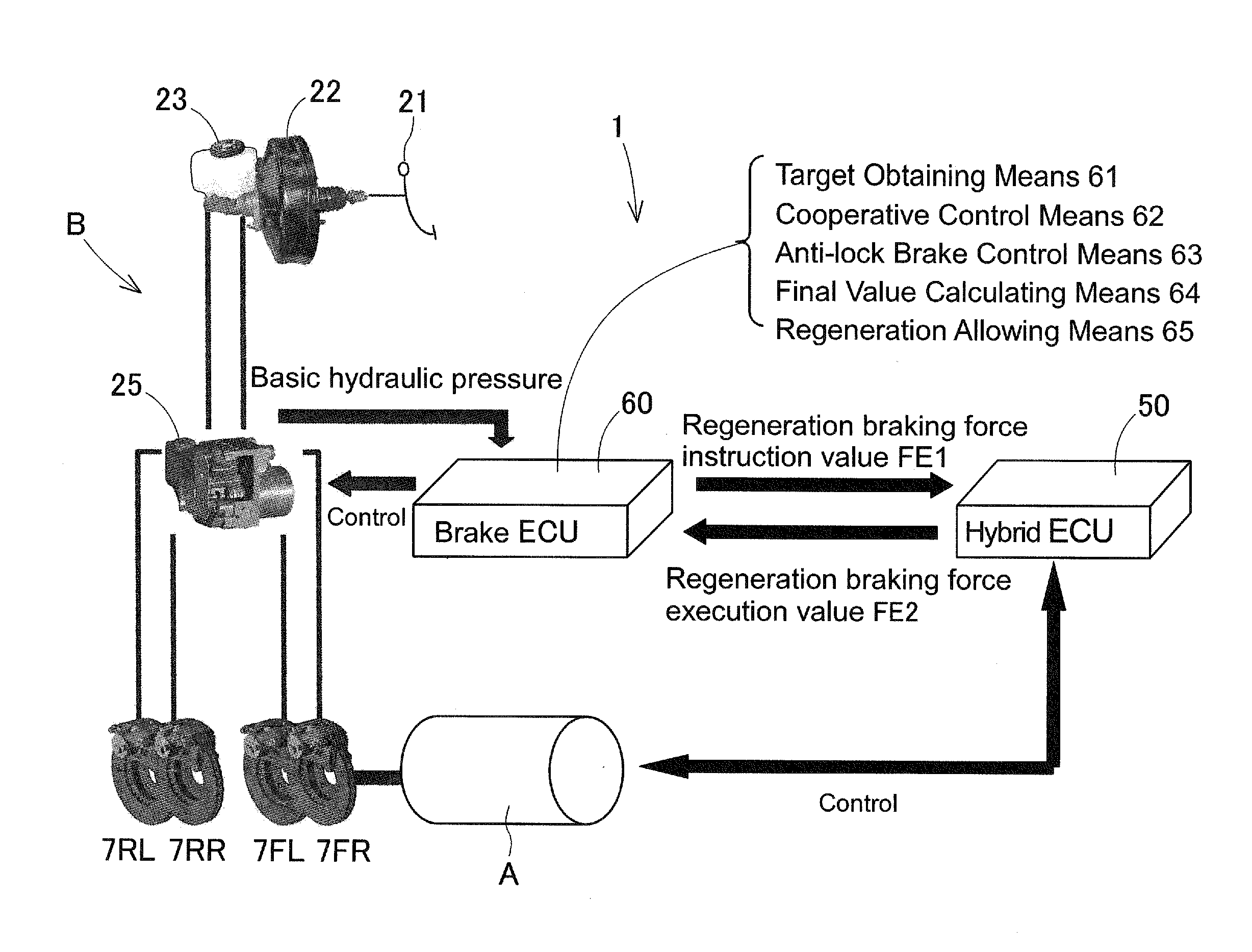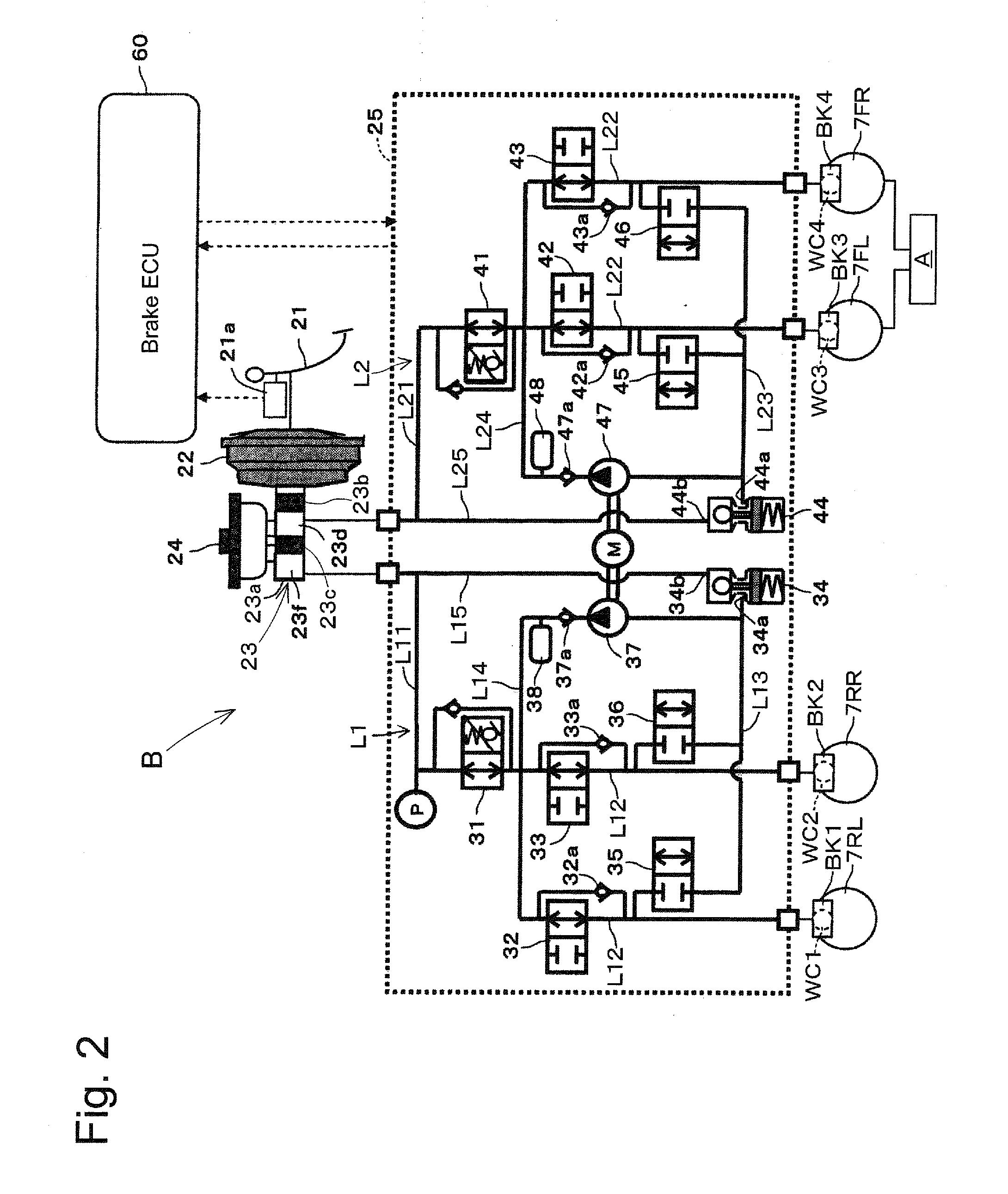Vehicle brake device
a brake device and vehicle technology, applied in the direction of braking systems, vehicles, instruments, etc., can solve the problems of unsuitable regeneration braking force, affecting the operation preventing the start of regeneration cooperative braking, so as to improve regeneration efficiency and reduce possible occurrence. , the effect of improving regeneration efficiency
- Summary
- Abstract
- Description
- Claims
- Application Information
AI Technical Summary
Benefits of technology
Problems solved by technology
Method used
Image
Examples
first embodiment
[0038]The hydraulic pressure control unit 25 is formed by the hydraulic control valves 31 and 41, the pressure increase control valves 32, 33, 42 and 43 and the pressure decrease control valves 35, 36, 45 and 46, pressure modulating reservoirs 34 and 44, pumps 37 and 47 and motor M. the components of the unit 25 is packaged and housed in one case. As shown in FIG. 2, the brake conduit system of the hydraulic brake device B according to the invention is formed by a front / rear conduit system having a first conduit system L1 which applies hydraulic pressure braking force to the rear right wheel 7RR and the rear left wheel 7RL and a second conduit system L2 which applies hydraulic pressure braking force to the front right wheel 7FR and the front left wheel 7FL. The first hydraulic pressure chamber 23d of the master cylinder 23 is connected to the second conduit system L2 and the second hydraulic pressure chamber 23f is connected to the first conduit system L1.
[0039]First, the first cond...
third embodiment
[0087]According to the vehicle brake device of the third embodiment, the operation under a transitional condition where the ABS control means 63 ended the operation and operation is transferred to the cooperative control means 62 does not become complicated and the operation is stabilized to suppress the influence by various types of disturbance.
[0088]It is noted that according to the embodiments explained above, allowable maximum regeneration braking force FEmax2 after the ABS control ended can be obtained by the function f(FK) corresponding to the magnitude of the ABS estimated available force FK. The function f(FK) can be freely set. Qualitatively, if a large regeneration braking force FE is allowed, the regeneration efficiency can be highly improved. However, under such situation the influence when the ABS control means 63 is re-started becomes large. Reversely, if a small regeneration braking force FE is allowed, the regeneration efficiency cannot be highly improved. However, t...
PUM
 Login to View More
Login to View More Abstract
Description
Claims
Application Information
 Login to View More
Login to View More - R&D
- Intellectual Property
- Life Sciences
- Materials
- Tech Scout
- Unparalleled Data Quality
- Higher Quality Content
- 60% Fewer Hallucinations
Browse by: Latest US Patents, China's latest patents, Technical Efficacy Thesaurus, Application Domain, Technology Topic, Popular Technical Reports.
© 2025 PatSnap. All rights reserved.Legal|Privacy policy|Modern Slavery Act Transparency Statement|Sitemap|About US| Contact US: help@patsnap.com



